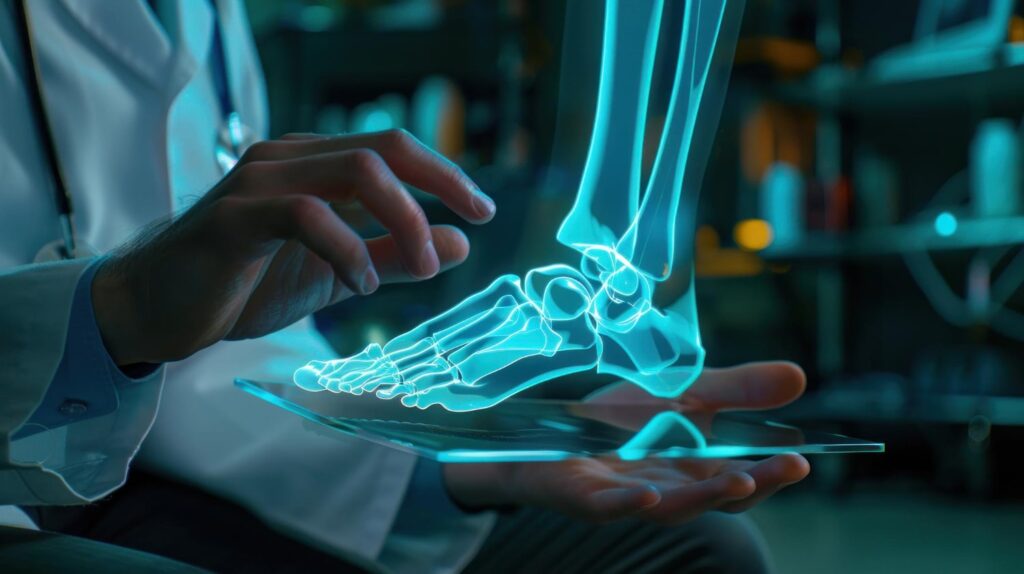The Future of Orthopedic Healing: Unlocking the Power of Exosome Therapy

Orthopedic conditions, ranging from chronic joint pain to severe injuries, have long posed challenges in the medical field. Traditional treatments often focus on managing symptoms rather than addressing the root cause of the problem. However, the landscape of orthopedic treatment is rapidly evolving, thanks to advancements in regenerative medicine. One of the most promising innovations in this space is the use of exosomes, tiny yet powerful messengers that play a crucial role in cell communication and healing. In this blog post, we’ll explore how exosome therapy is revolutionizing orthopedic care and what this means for the future of treatment.
Understanding Exosomes: The Building Blocks of Regeneration
Exosomes are nanosized vesicles that are naturally released by cells, acting as carriers of vital information between cells. They contain proteins, lipids, and genetic material, which they deliver to recipient cells, influencing their behavior and promoting healing. In the context of orthopedic treatment, exosomes derived from stem cells have shown remarkable potential in repairing and regenerating damaged tissues.
These exosomes work by modulating the immune response, reducing inflammation, and stimulating the body’s natural repair mechanisms. Unlike traditional therapies, which may involve invasive surgery or long-term medication use, exosome therapy offers a less invasive, more targeted approach to healing.

How Exosome Therapy is Transforming Orthopedic Treatment
1. Accelerating Healing and Recovery
One of the most significant benefits of exosome therapy in orthopedics is its ability to accelerate healing and recovery. When administered to an injury site, exosomes can reduce inflammation and promote the regeneration of damaged tissues, leading to faster recovery times. This is particularly beneficial for athletes and active individuals who are eager to return to their regular activities as quickly as possible.
2. Non-Invasive Treatment Option
Many traditional orthopedic treatments, such as surgery or joint replacement, are invasive and come with a lengthy recovery period. Exosome therapy, on the other hand, is a minimally invasive procedure that can be administered via injection. This not only reduces the risk of complications but also allows patients to resume their normal activities much sooner.
3. Reducing Inflammation and Pain
Chronic inflammation is a common issue in many orthopedic conditions, contributing to ongoing pain and discomfort. Exosomes have anti-inflammatory properties that can help reduce pain and improve joint function. By addressing the inflammation at its source, exosome therapy offers long-term relief rather than just masking the symptoms.
4. Promoting Tissue Regeneration
Unlike traditional treatments that may only provide temporary relief, exosome therapy promotes the regeneration of damaged tissues. This means that it addresses the underlying cause of the problem, leading to more sustainable and lasting results. For patients with degenerative conditions like osteoarthritis, this could be a game-changer in managing their disease.

Applications of Exosome Therapy in Orthopedics
Exosome therapy has shown promise in treating a variety of orthopedic conditions, including:
1. Osteoarthritis:
Osteoarthritis is a degenerative joint disease characterized by the breakdown of cartilage, leading to pain and stiffness. Exosome therapy can help regenerate cartilage tissue, reducing pain and improving joint function.
2. Tendon and Ligament Injuries:
Tendon and ligament injuries, such as ACL tears or rotator cuff injuries, can be challenging to treat. Exosomes can promote the healing of these tissues, potentially reducing the need for surgery and shortening recovery times.
3. Bone Fractures:
Exosome therapy can also aid in the healing of bone fractures by promoting the regeneration of bone tissue and reducing inflammation.
4. Chronic Joint Pain:
For patients suffering from chronic joint pain, exosome therapy offers a promising alternative to long-term medication use or surgery. By addressing the root cause of pain, exosomes can provide lasting relief.

The Future of Orthopedic Care with Exosomes
As research into exosome therapy continues to advance, the potential applications in orthopedics are expanding. Scientists are exploring how exosomes can be combined with other regenerative treatments, such as stem cell therapy, to enhance their effectiveness. Additionally, advances in exosome isolation and delivery methods are making the therapy more accessible and effective for patients.
The use of exosomes in orthopedic treatment is still relatively new, but the results so far are promising. As more clinical studies are conducted, we can expect exosome therapy to become a standard option in the treatment of orthopedic conditions, offering patients a safer, more effective alternative to traditional methods.
Why Choose exosmart for Your Orthopedic Needs?
At exosmart, we are at the forefront of regenerative medicine, offering cutting-edge exosome therapy for a variety of orthopedic conditions. Our team of experts is dedicated to providing personalized care that addresses the unique needs of each patient. Whether you’re dealing with a sports injury, chronic pain, or a degenerative condition, we’re here to help you explore the best treatment options available.
Our commitment to excellence means that we use only the highest quality exosomes, derived from carefully selected sources and processed using state-of-the-art techniques. This ensures that our patients receive the most effective treatment possible, with minimal risk and maximum results.
Conclusion
Exosome therapy represents a significant leap forward in the treatment of orthopedic conditions. By harnessing the body’s natural healing abilities, this innovative approach offers new hope for patients seeking relief from pain, faster recovery, and long-term healing. At exosmart, we’re proud to be leading the way in this exciting field, helping our patients achieve better outcomes and improved quality of life.